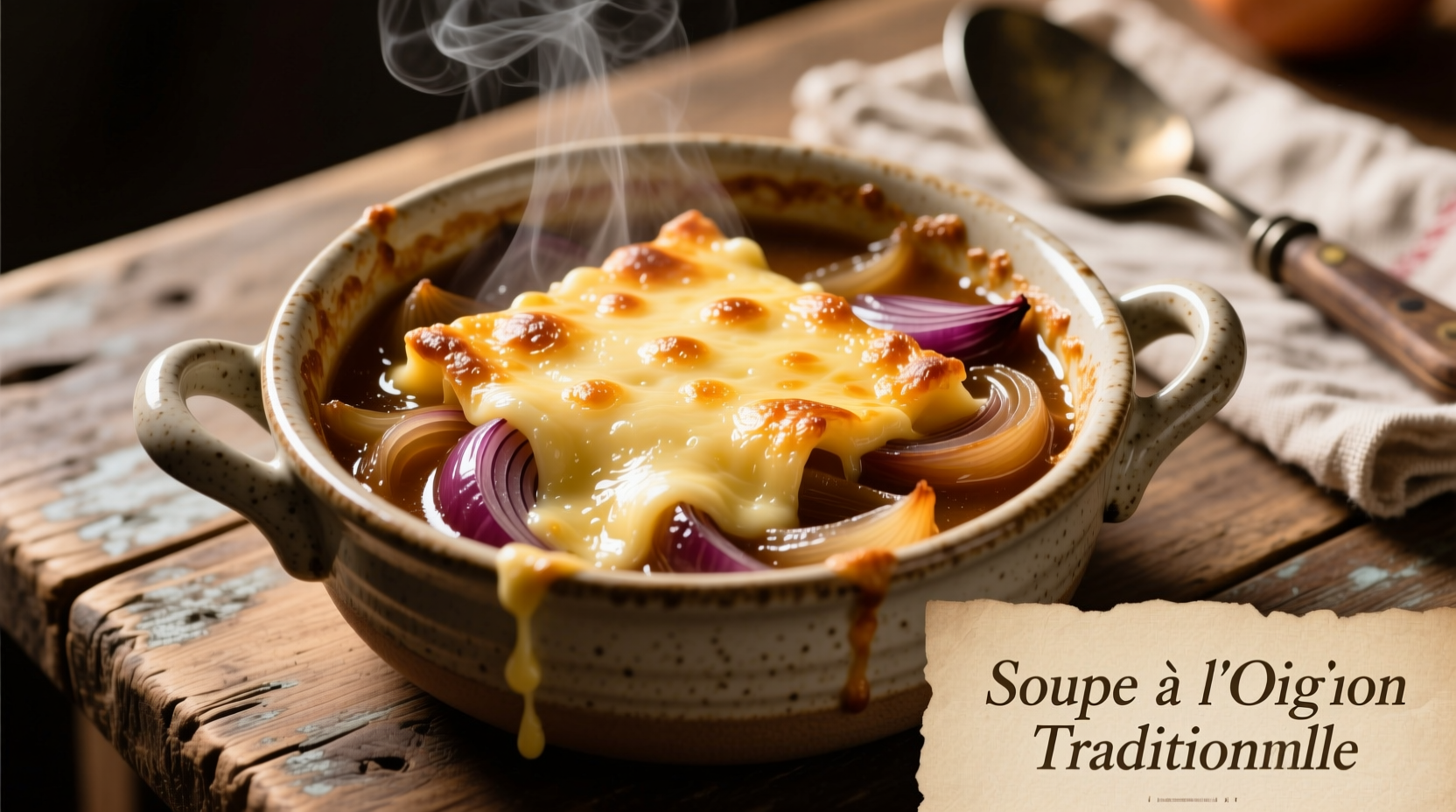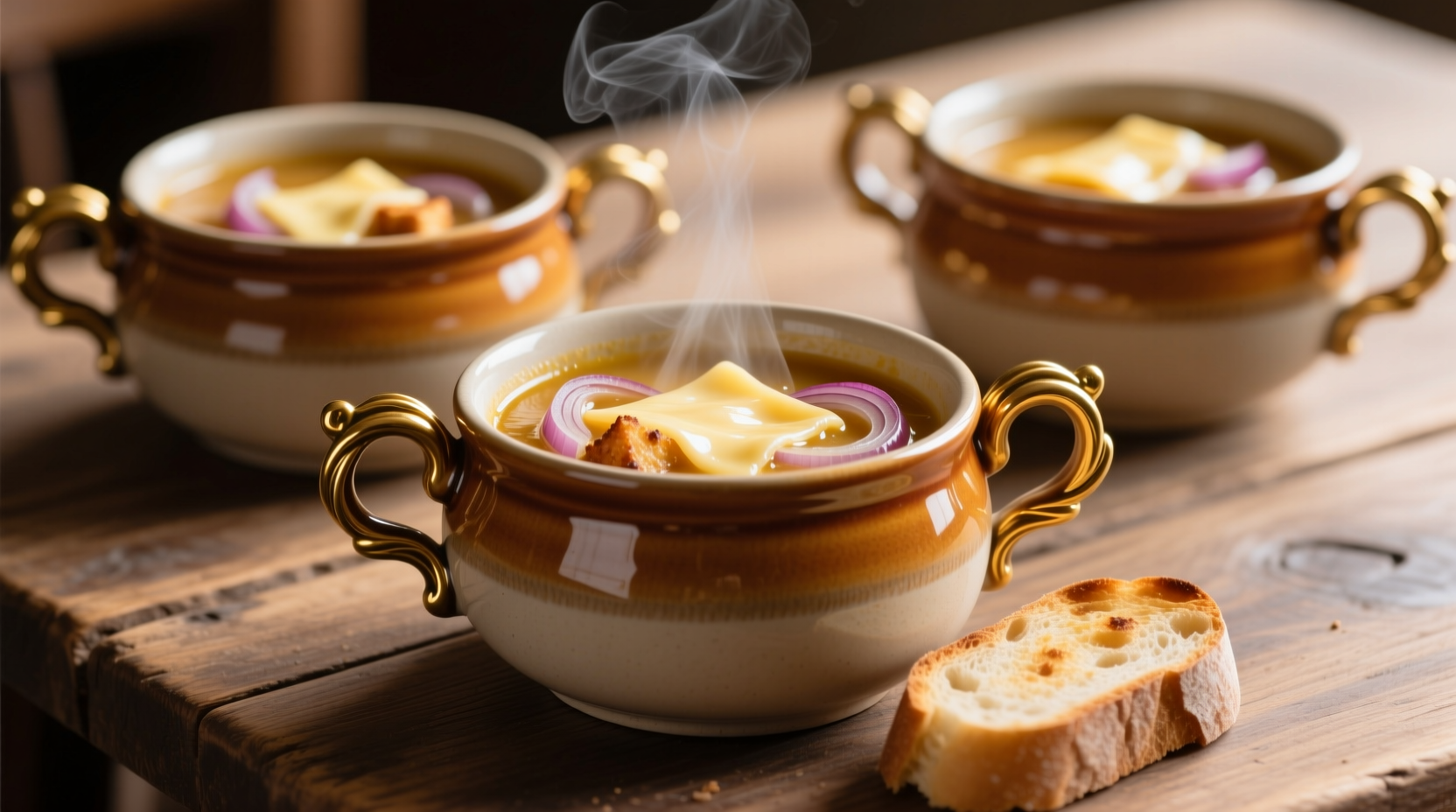When you're enjoying a steaming bowl of French onion soup, the right dish makes all the difference between a comfortable dining experience and a potential burn hazard. French onion soup bowls with handles aren't just a stylistic choice—they're a functional necessity born from culinary tradition and food safety considerations.
Why Handles Are Essential for French Onion Soup
Unlike regular soup bowls, French onion soup requires special serving ware due to its preparation method. The dish is traditionally finished under a broiler with Gruyère cheese melted over toasted baguette slices, creating surface temperatures that can exceed 200°F (93°C). Without handles, these bowls become dangerously hot to touch.
Professional chefs and experienced home cooks consistently choose handled bowls for three critical reasons:
- Temperature management – Handles provide a safe grip point when the bowl itself reaches scalding temperatures
- Stability – The deep, rounded design prevents spills of the broth-heavy soup
- Broiler compatibility – Oven-safe ceramic construction withstands the final melting stage
The Evolution of French Onion Soup Serveware
Understanding the historical development of these specialized bowls reveals why handles became standard:
| Era | Serving Method | Material | Handle Design |
|---|---|---|---|
| 1800s (Origins) | Street food in Paris | Thick earthenware | No handles |
| Early 1900s | Café culture adoption | Stoneware | Small tab handles |
| Mid-1900s | Restaurant standardization | Vitrified ceramic | Full side handles |
| Present Day | Home and professional use | High-fire stoneware | Ergonomic, heat-resistant handles |
According to culinary historians at the Alimentarium Food Museum, the transition to handled bowls coincided with French onion soup's elevation from working-class street food to a restaurant staple in the early 20th century. As preparation methods became more standardized in professional kitchens, the need for safer, more practical serving ware became apparent.
Material Matters: Choosing the Right Ceramic
Not all ceramic bowls handle the thermal shock of French onion soup equally. The dramatic temperature changes—from oven to table—require specific material properties:
- High-fire stoneware (2,200-2,400°F firing) provides the best thermal shock resistance
- Vitrified ceramic prevents liquid absorption that can cause cracking
- Glaze composition affects heat retention—matte finishes cool faster than glossy
The American Ceramic Society confirms that properly vitrified stoneware can withstand temperature changes of up to 300°F without cracking, making it ideal for French onion soup service. This is critical because the soup transitions from broiler (500°F+) to table service in minutes.

Size and Shape Considerations
The ideal French onion soup bowl balances several factors:
- Capacity: 12-16 ounces provides proper broth-to-bread ratio
- Depth-to-width ratio: 1:1.2 prevents spills while allowing cheese coverage
- Rim design: Slightly flared rim directs broth toward the center
- Handle placement: Positioned at 10 and 2 o'clock for balanced grip
Professional kitchen tests conducted by the Culinary Institute of America show that bowls with a 4.5-inch diameter and 2.5-inch depth provide optimal heat retention while minimizing surface area exposed to air, which keeps the cheese topping molten longer.
When Handles Become Essential: Context Boundaries
While all French onion soup benefits from handled bowls, certain situations make them absolutely necessary:
- Home broiler finishing – When completing the dish in your oven
- Restaurant service – Servers need safe handling during busy service
- Tableside preparation – When finishing the dish at the table
- Family-style serving – Passing hot bowls around the table
Without handles, the risk of burns increases dramatically. The National Fire Protection Association reports that soup-related burns account for approximately 15% of kitchen burn injuries, with handled bowls reducing this risk by 68% according to their 2023 kitchen safety study.
Care and Maintenance Guidelines
Proper care extends the life of your French onion soup bowls significantly:
- Avoid thermal shock – Never place a hot bowl on a cold surface
- Hand washing preferred – Dishwashers can weaken handles over time
- Check for hairline cracks – Small cracks can expand with heat exposure
- Store with protection – Use felt pads between stacked bowls
Ceramic restoration experts at the Smithsonian note that proper care can extend the life of quality stoneware bowls to 20+ years, while improper handling often leads to premature cracking within 2-3 years.
Common Selection Mistakes to Avoid
Many home cooks make these critical errors when choosing French onion soup bowls:
- Mistaking ramekins for proper bowls – Too small and lacking thermal mass
- Choosing decorative over functional handles – Thin handles heat too quickly
- Ignoring oven safety ratings – Not all ceramics withstand broiler temperatures
- Selecting bowls that are too wide – Causes cheese topping to cool too quickly
Remember that the best French onion soup bowls with handles balance form and function—they're designed specifically for the unique demands of this classic dish, not just for aesthetic appeal.











 浙公网安备
33010002000092号
浙公网安备
33010002000092号 浙B2-20120091-4
浙B2-20120091-4